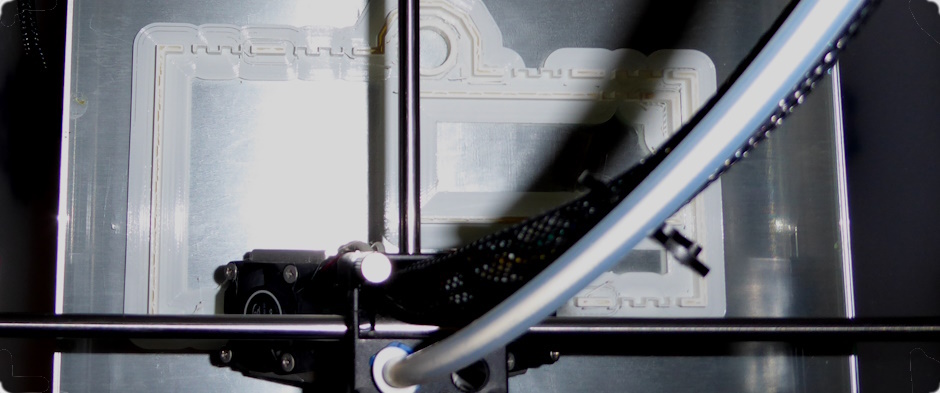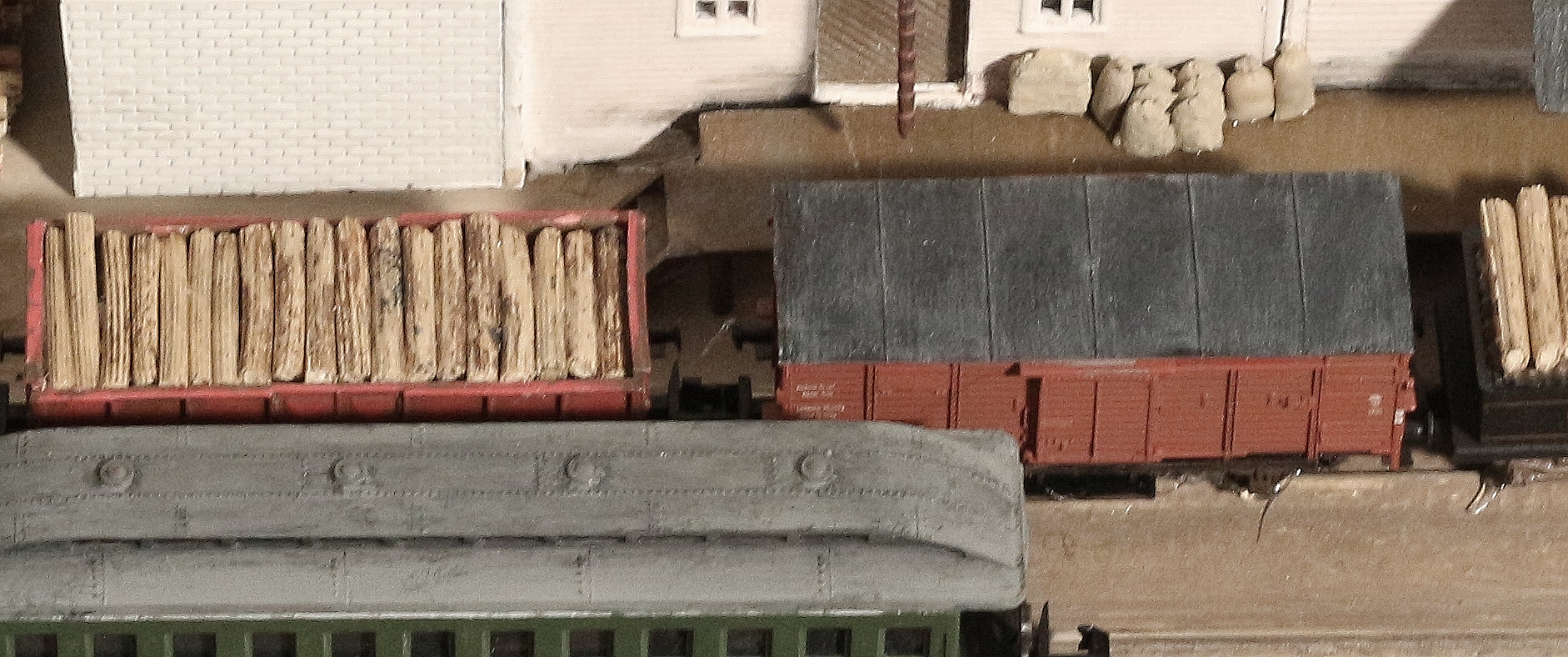3D Printing
For very special structures
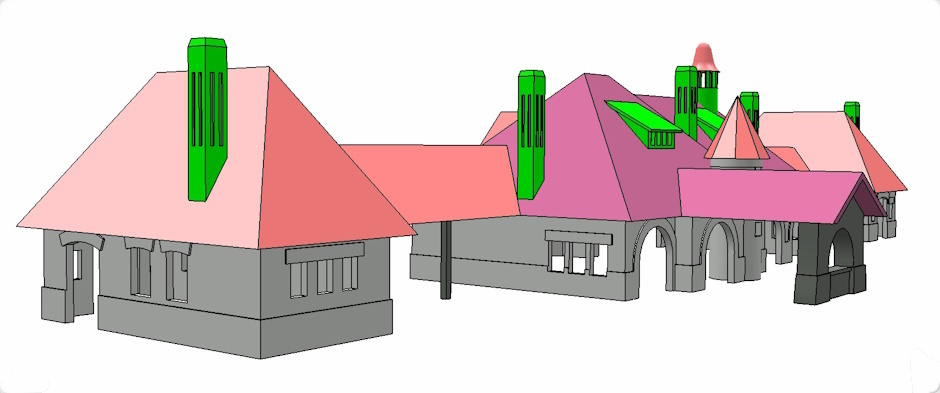
Creating 3D design data
With the help of photographs, historical and digital maps, you can rebuild the structure by Computer Aided Design (CAD). | Choose a program that suits you, e. g. FreeCAD. | It is important to think about the best partitioning of the data. Every color stands for a single part.
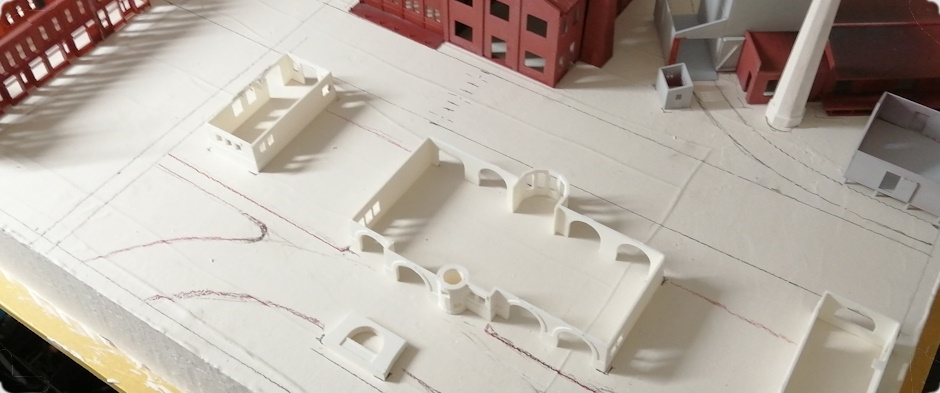
Laying out 3D printed parts
Using other model kits, rails, a pencil and first printed parts, the final layout is set, and proportions are being checked. The prints are made of Ultimaker Polylactic Acid (PLA), a robust yet well printable material.

Finishing the structure
Before assembling the printed parts, some smoothing and sanding is necessary. Then all parts are assembled using superglue. Finally the colors are applied - using paintbrushes only. The roof tiling is made of printed cardboard.
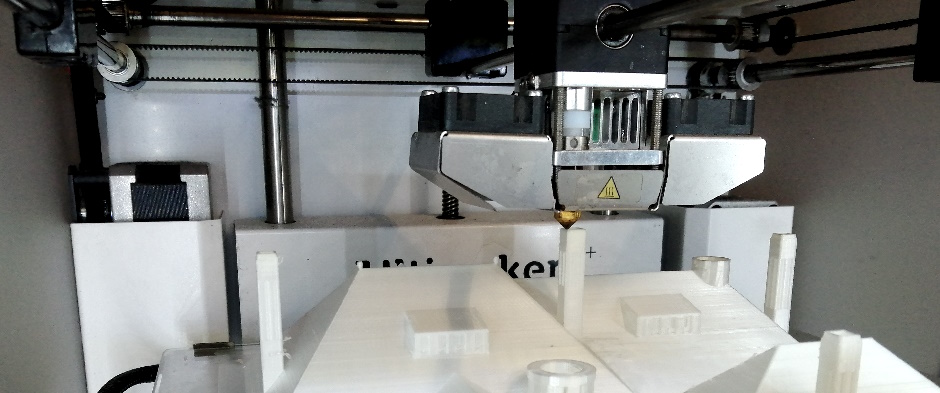
3D Printing.
Printing an arrangement like this takes the whole night. | For N scale the precision of the printer is essential. The Ultimaker 2 (sold out) allows for height steps of .1 mm and a line width of .4 mm with a .4 mm standard nozzle. | The free Cura software provides pre-defined, well-working parameter sets for lots of materials.
Kitbashing
Using structures that look somewhat familiar

Original kit.
Walthers Cornerstone #933-3238
Result.
Eagle Steam Mill

Original kit.
Walthers Cornerstone #933-3224 & 3851
Result.
Hotel & shops
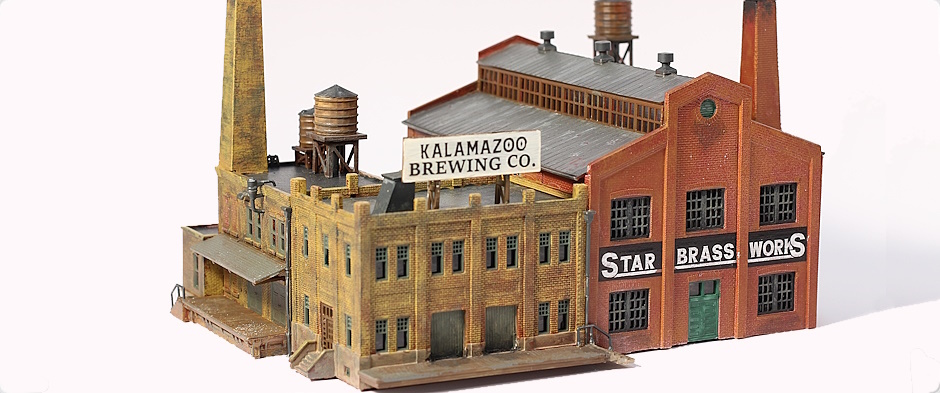
Original kits.
Woodland Scenics #785-5204
Walthers Cornerstone #933-3201 & 3233
Result.
Brewery & foundry
Figures | Rolling Stock
For pictures of the originals, please follow the links.
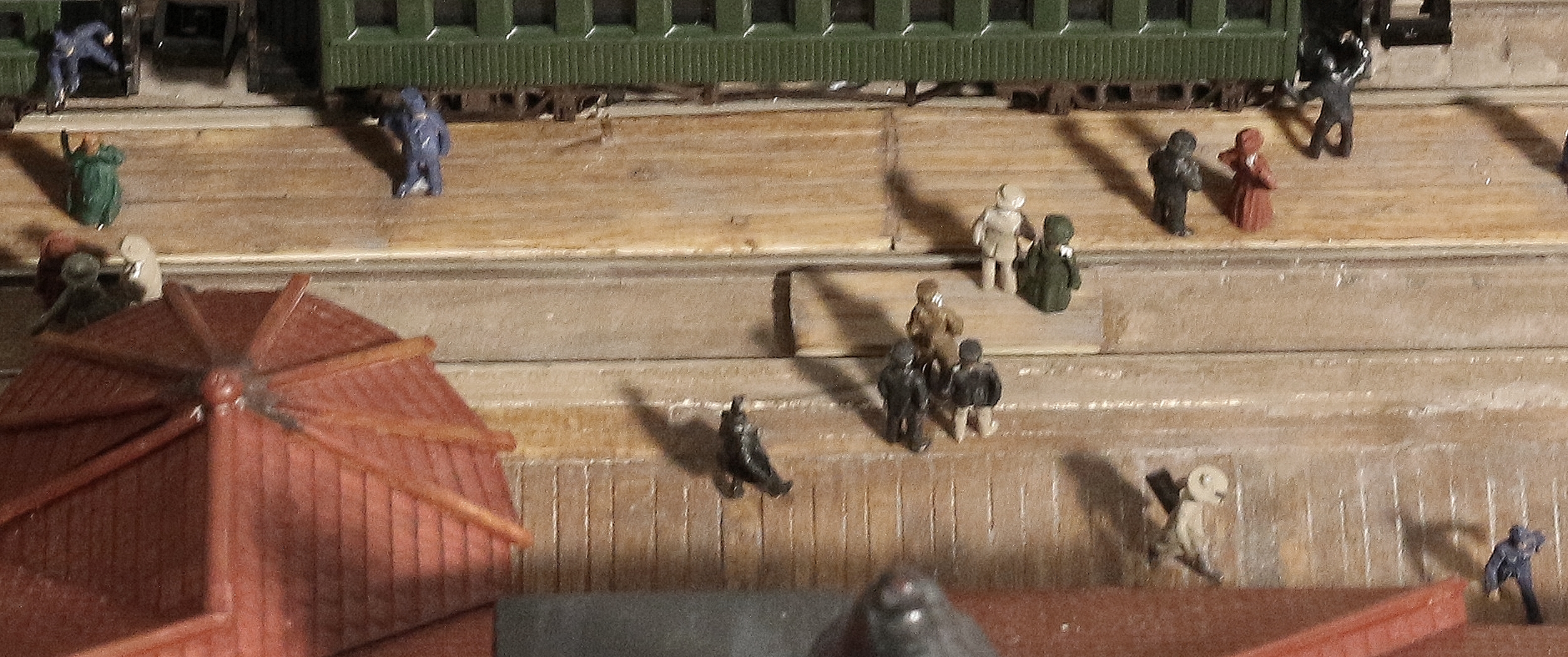
1890s figures.
N scale Victorian or Edwardian figures are very hard to find. Andrew C Stadden in the UK offers a variety of cast white metal figures in excellent quality.
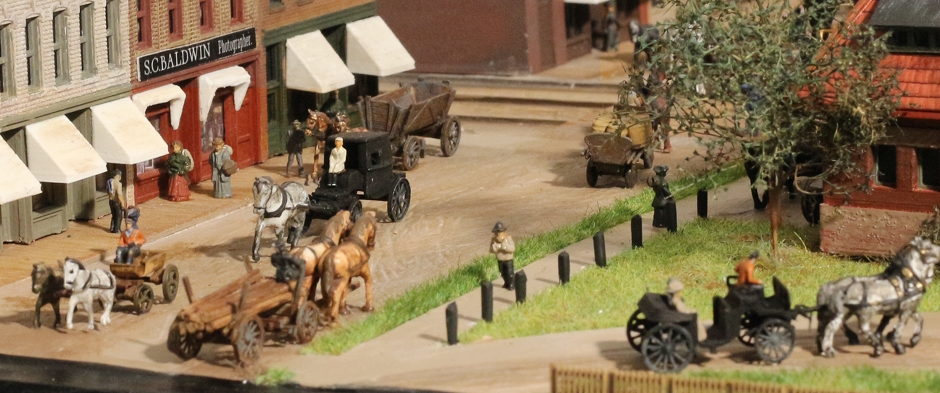
Carts, cabs & carriages.
No easier to find: 1890s horse-drawn vehicles in N scale, especially cabs. Langley Models in the UK offers a variety of cast white metal carts, trolleys and more. For the beer carts and the Landauer cabs, Preiser models were the best offer.
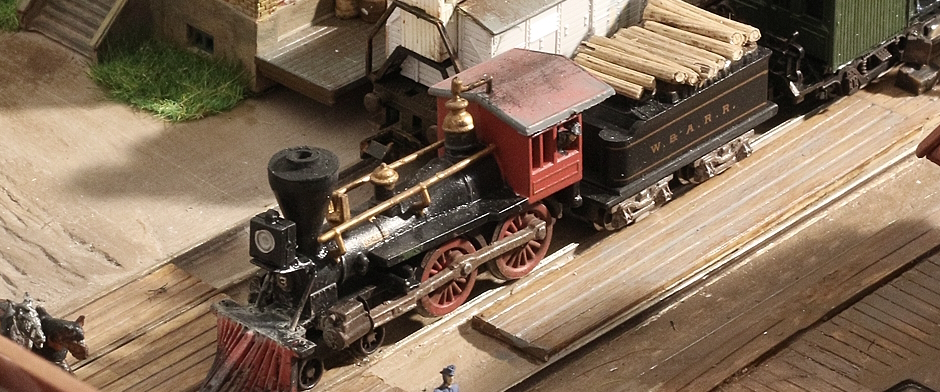
American 4-4-0.
I found a beautiful static locomotive by Del Prado (sold out). Fine details, but much cheaper than a functional type. | The 4-4-0 "American" was the standard locomotive in the late 19th century United States, those days being built by several companies.
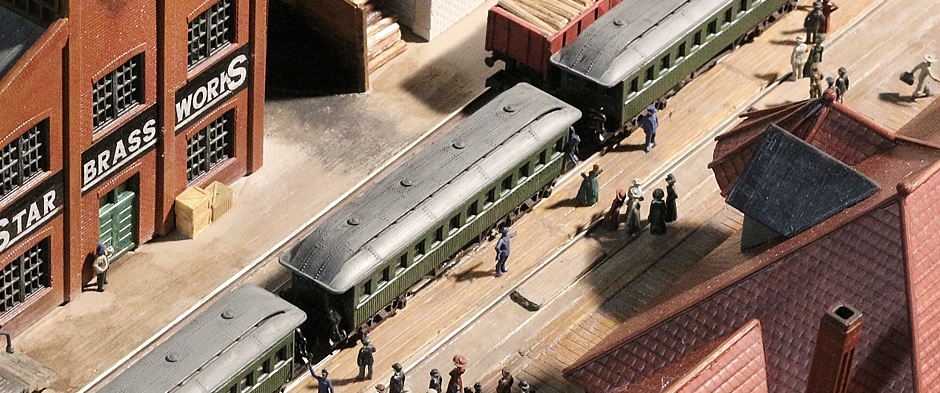
Overton cars.
A used set of combine (luggage and passenger) and passenger cars should do, e. g. from Bachmann Europe. | All the fancy colors depend on the railroad company that used the cars. I was ensured that MCRR painted them in classical Pullman green. So did I.
